Marconi Lab Research
Catch our current and recent research in Agriculture, Health, and Natural Language Processing
Health
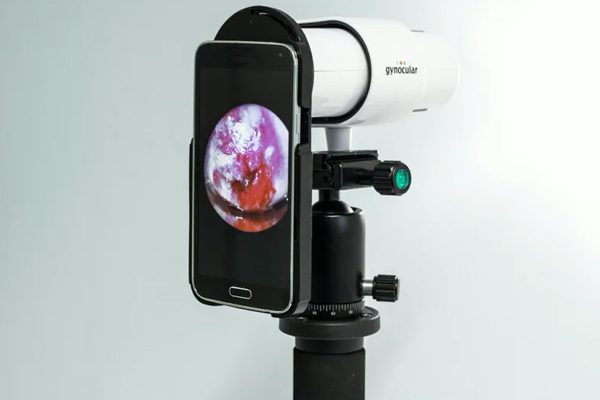
Real-time Tele- consultation for Cervical Cancer Screening Using a Machine Learning-enabled Mobile App
view more
Real-time Tele- consultation for Cervical Cancer Screening Using a Machine Learning-enabled Mobile App
Team
Hanifa Nabuuma, Andrew Katumba, Ben Wycliff Mugalu, Mark Phillip Matovic,
Cervical cancer in particular is the fourth most common cancer in women, and the seventh overall, responsible for 569,847 deaths globally
(World Health Organization 2018). Over 85% of the global cervical cancer burden occurs in LMICs. In Uganda, cervical cancer is the
commonest cancer in women and the incidence is increasing (Wabinga et al. 2014). Effective identification and treatment of precancerous
cervical lesions or early stage cervical cancer is the most important intervention in the fight against cervical cancer. Women are screened
by visual inspection with acetic acid (VIA) and those with lesions treated before the lesions become cancerous. HIV positive women should
be screened annually while those who are negative should be screened every 3 years (Nakisige, Schwartz, and Ndira 2017). Lack of
awareness among the healthcare workers, at frontline facilities, who lack oncology knowledge, is another challenge. Another challenge is
the lack of means to notify patients when they are due for (re)screening.
Wabinga, Henry R., Sarah Nambooze, Phoebe Mary Amulen, Catherine Okello, Louise Mbus, and Donald Maxwell Parkin. 2014. “Trends
in the Incidence of Cancer in Kampala, Uganda 1991-2010.” International Journal of Cancer 135 (2): 432–39. doi:10.1002/ijc.28661.
To promote early detection in rural areas, Uganda Cancer Institute (UCI) implemented set up a mobile colposcopy at its satellite clinic in
Mayuge where health workers use it to capture cervical images and transmit them to UCI for experienced gynecologists to examine them
and advise the health workers on more complex cases. To make this consultation real-time, we developed a mobile app through which the
health workers upload the images which the gynecologists can view immediately and enter their impression which the health worker
can also view immediately. The mobile app is accessible on any Android smartphone.
The app has machine learning (ML) capabilities for classifying the images taken by the mobile colposcope. The images are classified as
classified as “positive”, “negative” and also indicate where lesions are. The ML classifications coupled with VIA screening help to improve the accuracy of the screening process. If gynecologists are unavailable, the ML capability can assist the health worker in their
decision. Finally, if the patient needs re-screening, the app will be able to send them a text message reminder for their appointment.
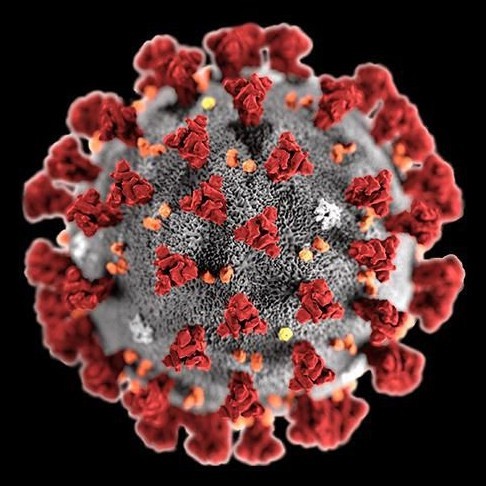
Development of an Efficacious Patient Management System for Uganda using Machine Learning Techniques
view more
Development of an Efficacious Patient Management System for Uganda using Machine Learning Techniques
Team
Dorothy Okello, Cosmas Mwikirize, Andrew Katumba, Wayne Okello, Moses Bomera,
Patient management is a collective term to describe the series of steps involved in handling a patient at a health facility right from acquisition of laboratory samples from the patient(s) through chemo-testing and dissemination of test results to the patient (s) and /or any other stake holder involved to prescription and administration of treatment to the patient(s). This process is currently performed on manual basis that is significantly hinged on active human (health worker) participation and intelligence (tacit knowledge).
visit site
Smart Portable Ultrasound System for Guidance of Minimally Invasive Procedures
view more
Smart Portable Ultrasound System for Guidance of Minimally Invasive Procedures
Team
Cosmas Mwikirize, Andrew Katumba, R Byanyima, Joyce Nabende, I Hacihaliloglu,
Non-Communicable Diseases (NCDs) such as cardiovascular disease, diabetes and cancer are a major burden in Uganda, increasing the need for requisite diagnosis/therapeutic procedures such as vascular interventions and biopsies. These procedures involve percutaneous needle insertion, and their success relies on accurate needle localization. Ultrasound imaging is the gold-standard for visualization of needle progress vis-à-vis patient anatomy. However, under ultrasound, needle localization is hindered by signal attenuation, limited field of view and artifacts. Inaccurate needle localization reduces procedure efficacy and can cause injury. In this project, these problems are addressed by developing a low-cost imaging system for diagnosis/treatment of NCDs that uses machine learning for needle localization.
visit site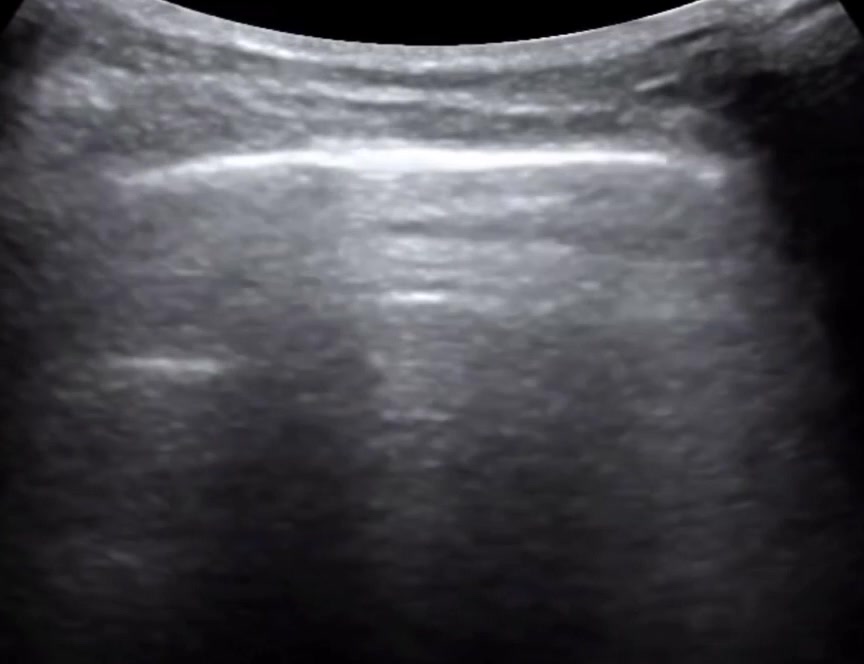
Machine Learning-guided Screening of COVID-19 using Point-of-Care Ultrasound in Uganda
view more
Machine Learning-guided Screening of COVID-19 using Point-of-Care Ultrasound in Uganda
Team
jonathan Serugunda, Cosmas Mwikirize, Andrew Katumba, Mark Phillip,
In the absence of a cure or vaccine for the novel coronavirus, early diagnosis and isolation of COVID-19 patients is critical to stemming community spread. Ideally, this would involve mass and regular testing of all persons, for which Uganda does not yet have the capacity. Therefore, testing resources have been focused on high-risk demographics and their contacts. Screening toward targeted testing of the general population is difficult because most cases are asymptomatic. It is thus plausible that many asymptomatic cases in the community are undetected, thus creating a risk for an infection avalanche. This project proposes the development of a smart point-of-care ultrasound-based solution for pre-emptive screening of COVID-19.
visit siteAgriculture
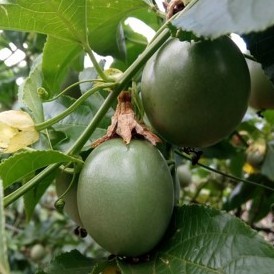
A Portable Deep Learning-based Platform for Passion Fruit Disease Identification (Katunda Project)
view more
A Portable Deep Learning-based Platform for Passion Fruit Disease Identification (Katunda Project)
Team
A. Katumba, M. Bomera, C. Mwikirize, G. Namulondo,
Pests and diseases pose a key challenge to passion fruit farmers across the country. They lead to loss of investment as yields reduce and losses increases. As the majority of the farmers, including passion fruit farmers, in the country are smallholder farmers from low-income households, they do not have sufficient information and means to combat these challenges. Without the required knowledge about the health of their crops, farmers cannot intervene promptly to turn the situation around. This project addresses the problem of lack of a reliable, timely diagnostic platform for passion fruit diseases, proposing to develop a low-cost hand-held diagnostic device (based on low compute devices, specifically the raspberry) making use of state-of-the-art machine learning techniques for identification.
visit site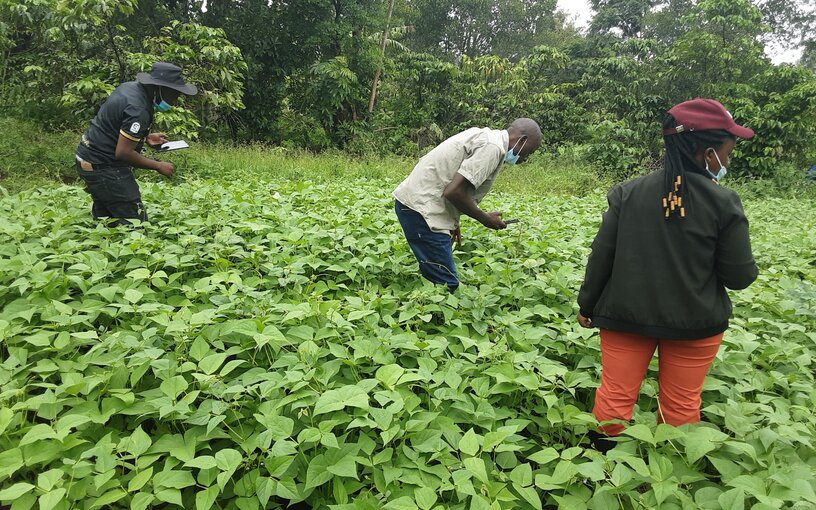
Development of Machine Learning Datasets for Crop Pest and Disease Diagnosis based on Crop Imagery and Spectrometry Data
view more
Development of Machine Learning Datasets for Crop Pest and Disease Diagnosis based on Crop Imagery and Spectrometry Data
Team
Andrew Katumba, Ben Wycliff Mugalu, Makerere AI Lab,
The current state of data collection and crop pest and disease diagnosis is transitioning from disease
identification using visible symptoms to the use of data-driven solutions applying machine
learning and computer vision techniques. Smallholder farmers and agricultural experts are
equipped with mobile phones loaded with software to automatically collect field-level Geo-coded
and time-stamped data. We have demonstrated the potential for the use of these tools for
disease diagnosis for beans, cassava, bananas and tomatoes. However, the image
data previously collected has not been sufficiently curated, prepared and shared with the wider
machine learning community. Moreover, by the time-image data is captured, diseases have
already manifested in different parts of the plant and little can be done to salvage the situation.
Although recent studies, research has shown that the presence of diseases can be
detected from leaf spectral six weeks before the appearance of visual symptoms, this work has
been limited. It is important to transfer this work from the controlled screen house environment
to the field for reproducibility and investigating how the plant metabolite is affected under these
Conditions.
Premised on the above unmet need, the goal of this project is to deliver open and
accessible key machine learning image and spectral datasets for crop pests and diseases for
cassava, maize, beans, bananas, pearl millet, cocoa from Uganda, Tanzania, Namibia and
Ghana.
Image Data expandd existing crop image datasets in Makerere AI lab, NM-AIST, NUST
and karaAgro AI and generate new large robust and easily accessible datasets at all partner
institutions that can be used for various machine learning experiments. By using farmers and
extension workers as the main crowdsourcing agents, we will get crop images at different crop
growth stages. Working with the different country agricultural partners, we map out the
agro-ecological zones from which suitable crop image data can be captured.
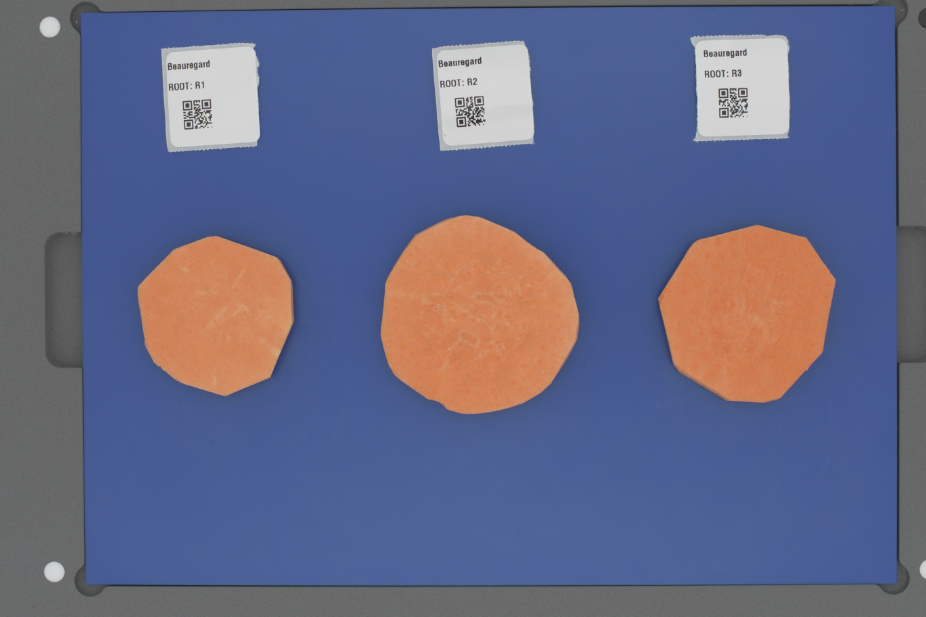
Digi Eye Sweet Potato Project: Predicting Sweet Potato Sensory Attributes using Image Analysis
view more
Digi Eye Sweet Potato Project: Predicting Sweet Potato Sensory Attributes using Image Analysis
Team
Andrew Katumba, Sudi Murindanyi, Makerere AI Lab,
During the sweet potato breeding process, phenotypes are measured for different quality traits, which differ from one crop to another. Their genetic, nutritional, organoleptic, biological, and morphological characteristics are classified into other groups. Color and appearance are morphological traits typically used by consumers as visual cues to decide underlying quality attributes such as taste, cooking quality, and texture of a particular crop or product. This means that color and appearance are crucial indicators for targeting end-user preferences for breeding nutritious food crops in Africa. The assessment of the organoleptic attributes is especially important for the breeders, including characteristics like taste, texture, and mealiness. These attributes are scored by a human-trained panel who taste different samples of sweet potatoes and also score some of the morphological traits like color. The assessment of this panel is used to inform the selection of samples that are progressed during the breeding and release of new varieties. In order to achieve a high-throughput sensory evaluation chain, the image-based analysis is used to evaluate different quality traits of the sweet potato samples. Images were taken using the DigiEye machine, a non-contact digital imaging system. The color and appearance of raw and cooked products can be instantly and accurately captured and analyzed under a stable light environment. After capturing the images, the attributes are analyzed using computer vision and machine learning techniques, and advanced tools that will increase the throughput of the human sensory panel.
visit siteNlp
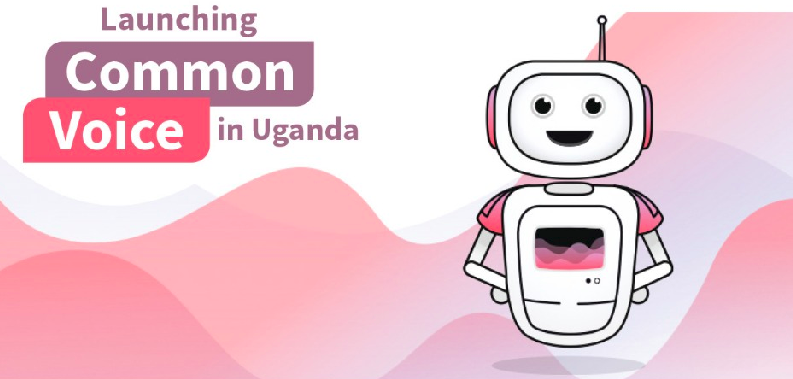
Luganda Common Voice
view more
Luganda Common Voice
Team
Andrew Katumba, Abraham Jerry Kakooza, Ronald Ogwang, Makerere AI Lab,
Common Voice is a crowdsourcing platform for text and audio. It is an open source project to allow individuals who are interested in building their language's digital footprint participate either by donating their voice or text , or by using the crowd sourced data to train and fine tune their NLP models for whichever task.
The Lacuna grant is funding the process of building an NLP Text and Speech Datasets for Low Resourced Languages in East Africa and this is being done with the help of the Common Voice(CV) tool where people from diverse demographics can contribute to this drive from any location as long as they have access to a web browser and internet. The language that is currently being focused on is Luganda due to its recent launch on the CV platform. Other languages such as Luganda, Runyankore-Rukiga, Acholi, Swahili, and Lumasaaba are also in the pipeline to have them launched on the CV platform to enable their people to also contribute to these . Among the various NLP technologies that these collected datasets can be used to build is an Automatic Speech Recognition model for these respective languages in support of the SDG’s .
Monolingual and parallel text corpora is also being developed for use in several NLP applications as shown below

Google Inclusion Project
view more
Google Inclusion Project
Team
Andrew Katumba, Abraham Jerry Kakooza, Makerere AI Lab,
The google inclusion project is aimed at having the adsurv farmer engagement app be able to support questions and provide answers in relation to agriculture in the Luganda language. This allows the app to be usable by the majority of Ugandan farmers who are illiterate yet they would want to tap into the potential of technology to better their farm performance and have good yields. In order to encapsulate a large number of the illiterate, it allows farmers ask questions by speaking in Luganda and they can receive audio feedback of similar questions with respective results(Answers). The recommended questions are powered by a machine learning recommender engine to return the most relevant questions from a plethora of q&a’s within the sofar gathered expert knowledge in the database
visit site
Radio Mining Workstream
view more
Radio Mining Workstream
Team
Andrew Katumba, Sudi Murindanyi, Makerere AI Lab,
In sub-Saharan Africa and Uganda, low internet penetration makes radio the preferred medium of social communication. Radio lets information flow from top to bottom and from the bottom to the top. For example, government and local village policies are announced first on radio in the local community language from top to bottom. From the bottom to the top, people's concerns, particularly in rural communities, most get heard through the various radio talk shows where they can call in. Recently, most of the discussions around the country have been centered around the COVID-19 pandemic and the government lockdown. Yet, while radio provides means to gather information about the concerns of people and the spread of COVID-19 discussions, there currently exists no way to retrieve this information except manually listening from nearly 300 licensed radio stations, which live in almost every village in Uganda. Radio Mining workstream is an end-to-end AI and data system for targeted surveillance and management of COVID-19 and future pandemics affecting Uganda.
visit siteTransport

Design of a Deep Learning Pothole Detection System
view more
Design of a Deep Learning Pothole Detection System
Team
Andrew Katumba, Moses Bomera, Priscilla Walaga,
With an increasing number of potholes on the roads that take a while before they are repaired, their adverse effects like accidents, traffic jam, flooding during the rainy season and damage to motor vehicles keep affecting road users. However, automating the process of the location and detection of these potholes can cut down the amount of time it takes for these potholes to be repaired from when they are first located. This report therefore presents the Design of a Deep Learning Based Pothole Detection System which involves a deep analysis on the use of machine learning and Convolutional Neural Networks in computer vision and object detection. This study will involve training a machine learning model with pothole dataset and later developing a model that can detect the presence of these potholes on the roads. Data collection was done by taking pictures in the form of videos of different roads inside a moving vehicle by use of a mobile phone placed on a car windscreen. A total of 836 images were collected, the images were resized and labelled by drawing bounding boxes around the potholes in the images. The images were then converted to a format compatible with the training algorithm, the COCO dataset format. For training the EfficientDet algorithm was used which is a high accuracy, high efficiency algorithm with each layer images going through different kinds of optimization till the box layer. Model training using the efficientdet algorithm was successful and a machine learning model that detects potholes with an Average Precision of 0.52515274 was developed. A pothole dataset of 836 images were collected and is stored in a database.
visit site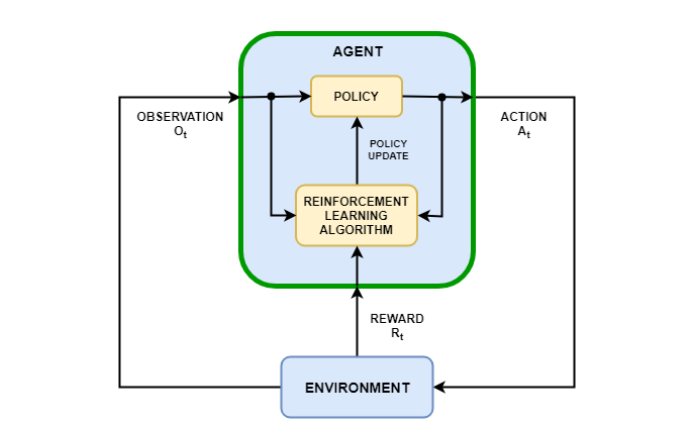
Design of a Machine Learning-Based Traffic Control System
view more
Design of a Machine Learning-Based Traffic Control System
Team
Edwin Mugume, Andrew Katumba, Sudi Murindanyi, Berna Namulwaya,
The project investigates the traffic jam problem at one of the junctions in Kampala, Uganda, Wandegeya junction. At Wandegeya junction, existing traffic light control causes long delays, air pollution, energy waste, accidents, and many other problems. Through Kampala Capital City Authority (KCCA), the government of Uganda has tried to solve this problem using different technologies like radar, but it did not help much. The project studies the traffic signal’s duration based on the data collected manually by counting cars and data from KCCA. The machine learning-based model was developed to control the traffic light(agent). Q-learning was used; it is a model-free reinforcement algorithm. Q-learning learned the actions of the agent and powers neural network to predict better steps to take. The model was evaluated via Simulation of Urban Mobility (SUMO) in a vehicular network, and the simulation results showed the efficiency of this model in controlling traffic lights.
visit siteClimate
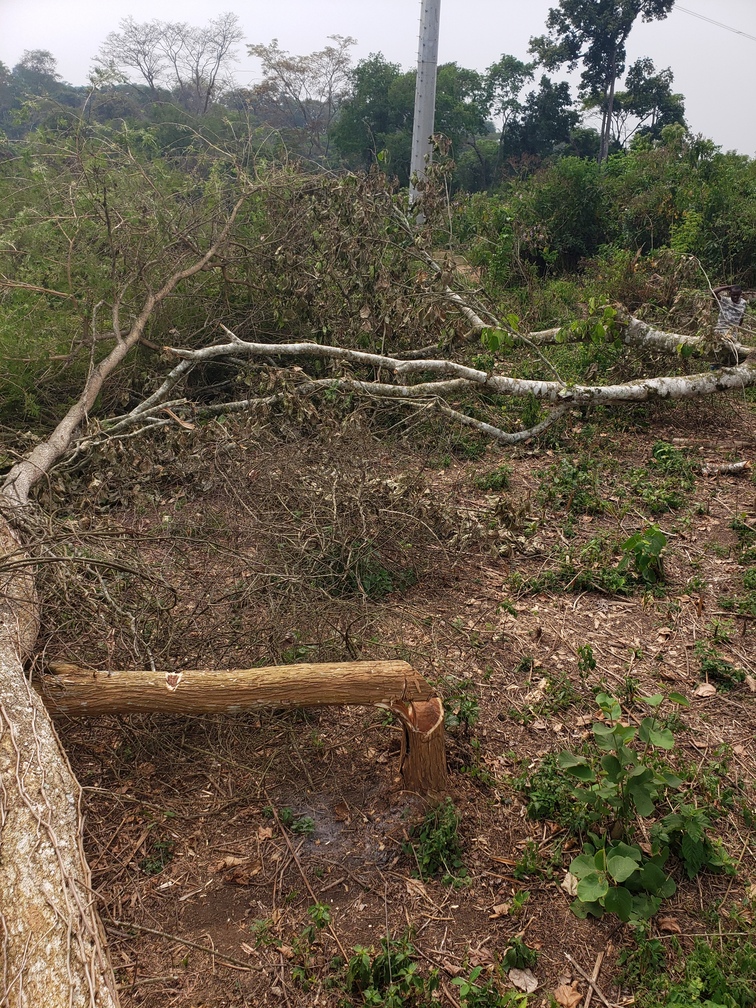
Google Deforestation
view more
Google Deforestation
Team
Andrew Katumba, Ben Wycliff Mugalu, Makerere AI Lab, Moja Global,
Agriculture, forestry, and other types of land use account for 23% [1] of global greenhouse gas emissions. To reduce these emissions, they need to be quantified accurately. Open source makes such quantification tools achievable for all countries, organizations, and companies. Moreover, Moja global provides tools for estimating emissions and removals of greenhouse gases (GHG) from the land sector. Deforestation is one of the main sources of GHG emissions from the land sector. Large amounts of carbon are stored in trees, absorbed from the atmosphere over decades, if not centuries. When the trees are cut down and used as firewood (or for other short-term uses), the carbon stored in the trees is released into the atmosphere. Moreover, the dead trees stop removing CO2 from the atmosphere. Tropical deforestation is responsible for 6–17% of global carbon dioxide emissions that affect climate change.
Uganda is an ideal country to sharpen the algorithm, based on the need, the data suitability, and the local forestry support. According to the World Bank Report [2], the rate of forest cover loss in Uganda stands at 2.6% annually, one of the highest in the world. As per the Uganda National Household Survey [3], more than 80% of Uganda’s rural households use firewood for cooking. The high demand for wood fuel, increase in urbanization and limited access to energy-saving alternatives means that forest cover is at risk of continued degradation. In the project, we proposed to apply Artificial Intelligence (AI) techniques to make accurate forest-cover change predictions at the pixel level using multi-spectral time-series satellite image data. Current approaches use historical trends at the aggregated level combined with drivers of deforestation as predictors. To achieve predictions that are local and do not need historic information at an aggregation level, some researchers have used modeling techniques like cellular automata. All these approaches are coarse and fail to create a level playing field for investment to avoid deforestation. The deforestation projections methodologies differ from country to country (and often from one project to the next) further increasing uncertainty. With our approach, we are to combine multi-spectral satellite data of forest cover with on-ground images and implement state-of-the-art deep learning models to predict deforestation.